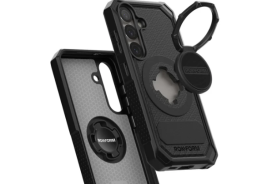In anticipation of the next-generation iPhone, which is expected later this year, either in June or October, the excitement of Apple enthusiasts over the new and exciting features, have hit the roof.
OLED Display
According to a recent report from The Korea Times, Apple is considering a shift from LCD to OLED screens, and may implement the high-end display in the next iPhone. The reason behind this change would reportedly be Samsung Display, Samsung's recently launched spin-off company, which aims to focus more on OLED technology.
"Thanks to the increased volume, chances have been raised to ship Samsung's OLEDs for Apple's iPads and even iPhones," reported The Korea Times, citing unnamed Samsung executives who spoke on the condition of anonymity.
Although the two companies still have ongoing legal battles, Apple continues to be Samsung's biggest customer. In 2011 alone it bought $7.8 billion worth of components, from memory chips to LCD panels. Now, Apple will reportedly buy $11 billion worth of components from Samsung, which could point to more expensive display material.
LCD, a 'Commoditized Business'
OLED displays are the new must-have, as the technology can deliver richer colors and better pictures than LCD. "LCD used to be one of the cutting edge technologies, but it is now a commoditized business," said Jasper Kim, founder and chief executive of Asia-Pacific Global Research Group. "It can be replaced and produced easily."
According to company spokespeople, Samsung will invest roughly $5.8 billion to develop its Samsung Display business. Considering that Samsung supplies the screens and the chips used in Apple's newest devices, including the last two generations of iPhones and iPads, it's a safe bet to assume that if Samsung shifts to OLED displays, so will Apple.
Face Recognition
In addition to the high-end OLED display, the new iPhone may also come with an exciting Face Recognition feature to ensure no one has access to the phone unless authorized. According to a recent ITProPortal report, Apple has filed a patent for Electronic Device Operation Adjustment Based on Face Detection, detailing the way a device could act when recognizing its authorized user.
The Face Recognition feature could apply to an "electronic device having at least a front facing image capture device and a front facing display device arranged to display visual content," according to the patent filing. This means that the device would analyze an image, match it to pre-loaded data and unlock based on that recognition. Moreover, the device will not offer alternative access methods to unlock it, which would make it more secure than other similar applications. Once the user is recognized and the device is unlocked, the user's profile would be automatically loaded, with all pre-determined settings and apps preferences.
"The facial data can be used to determine an orientation of the human face relative to the orientation of the preserved visual content. In other words, the electronic device can determine if the orientation of the preserved visual content is substantially the same, or different, than the orientation of the human face," details the patent filing.
Apple has not officially announced the specs and features of the next-generation iPhone, but it is expected to have a bigger display of at least 4 inches, a quad-core processor with the A6 chip, a new version of iOS, LTE support, and many other exciting features. With an OLED display and Face Recognition, however, Apple could have two powerful trump cards to dominate the smartphone market.
(reported by Alexandra Burlacu, edited by Surojit Chatterjee)
© Copyright 2026 Mobile & Apps, All rights reserved. Do not reproduce without permission.












